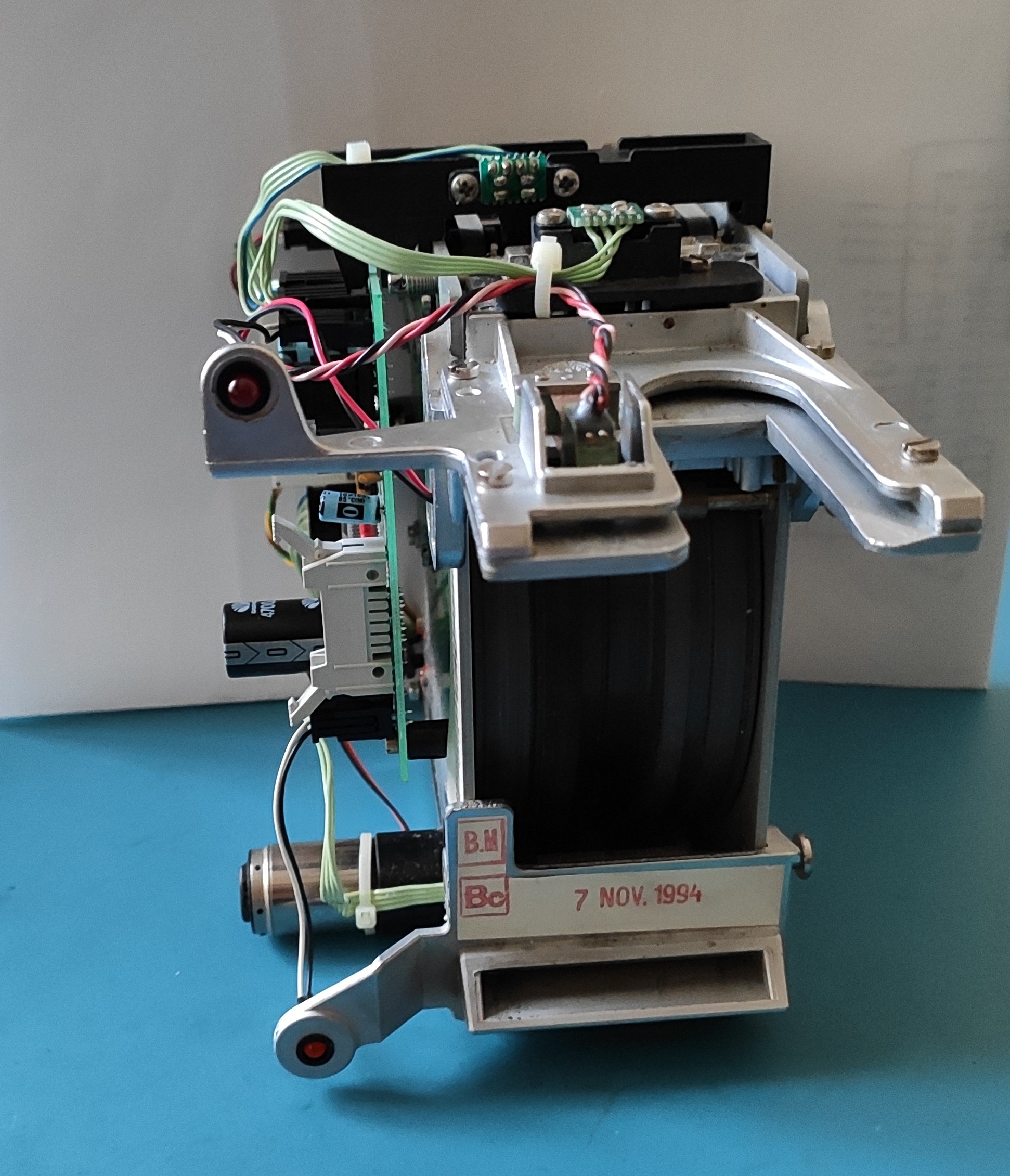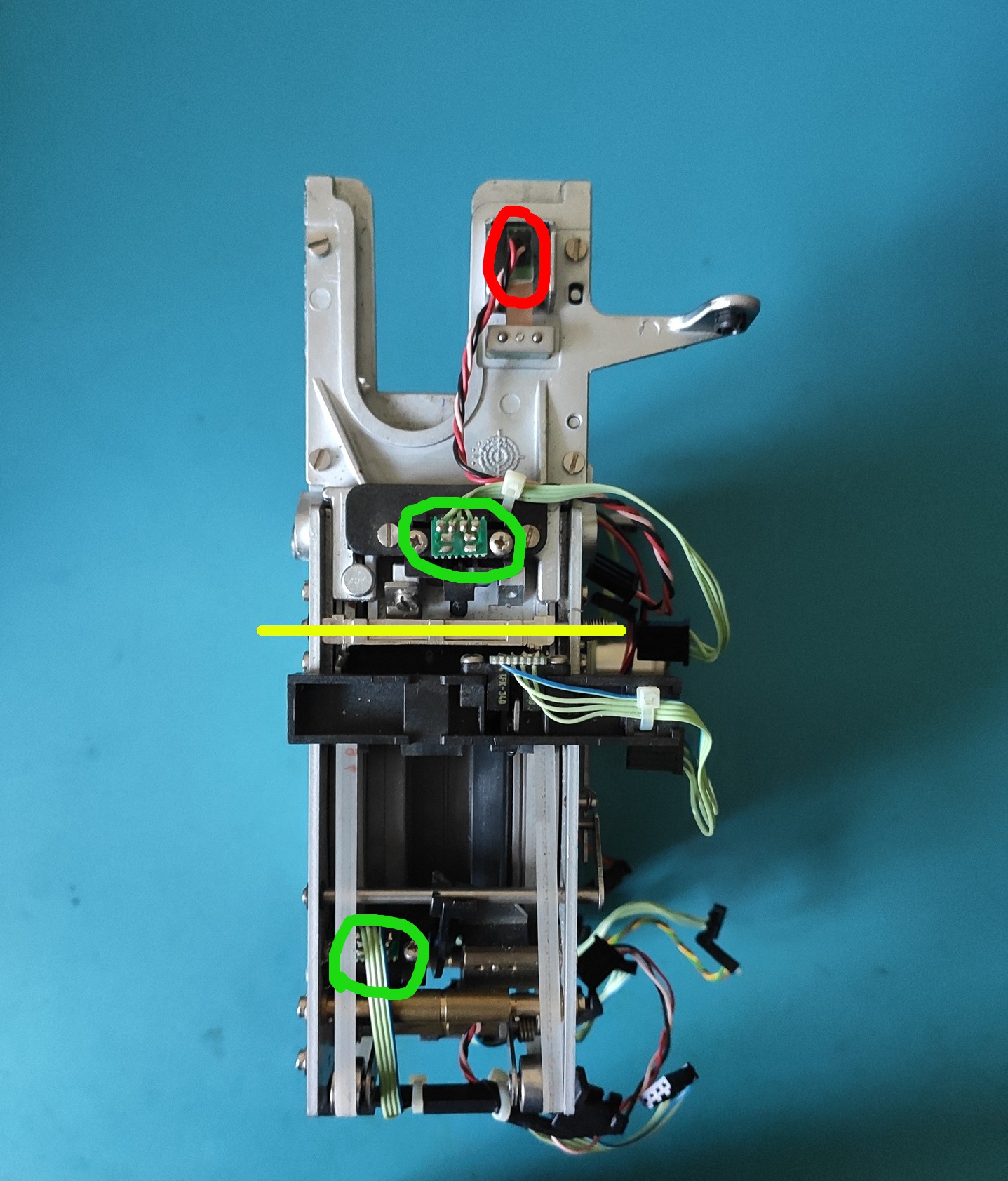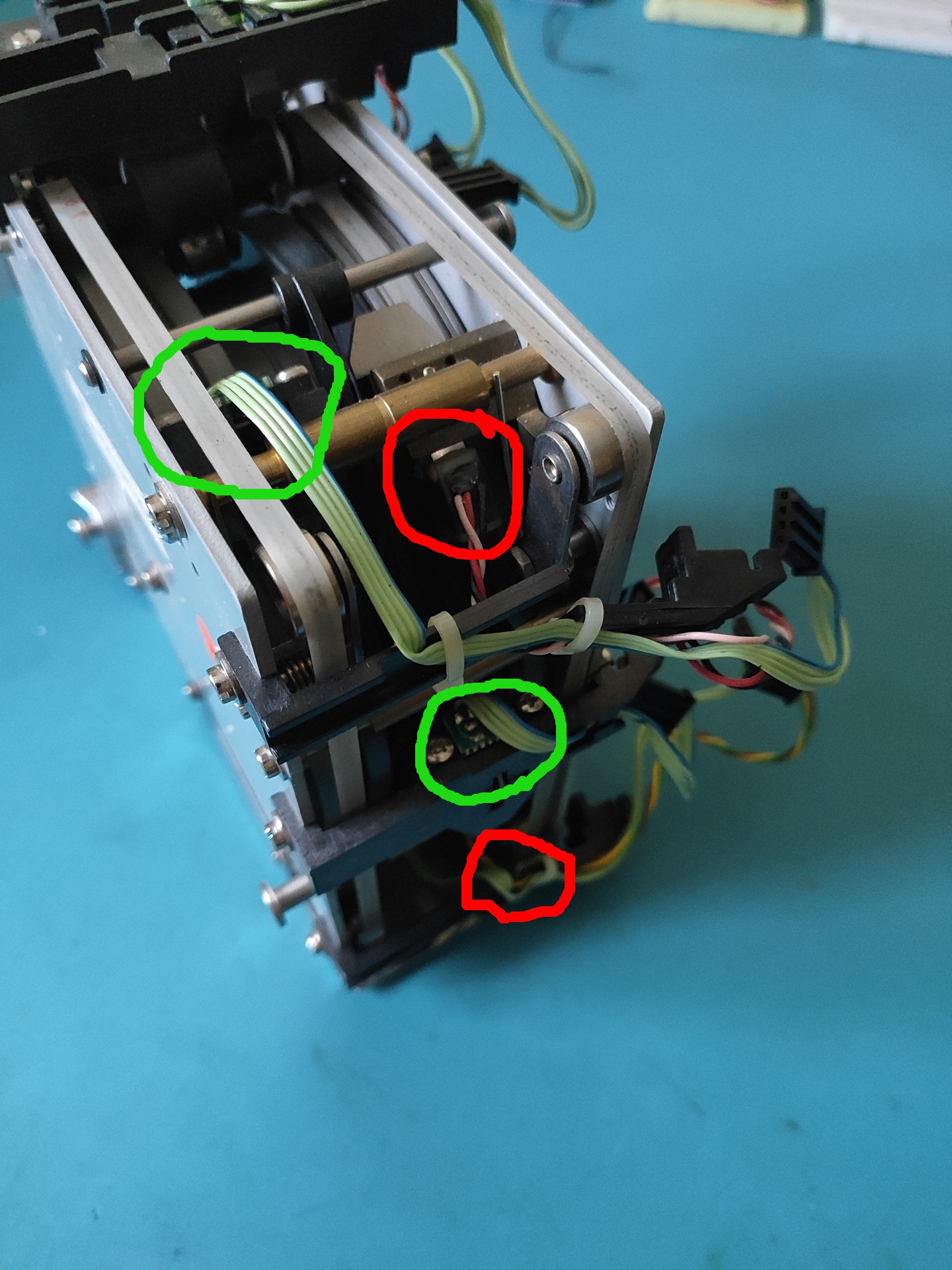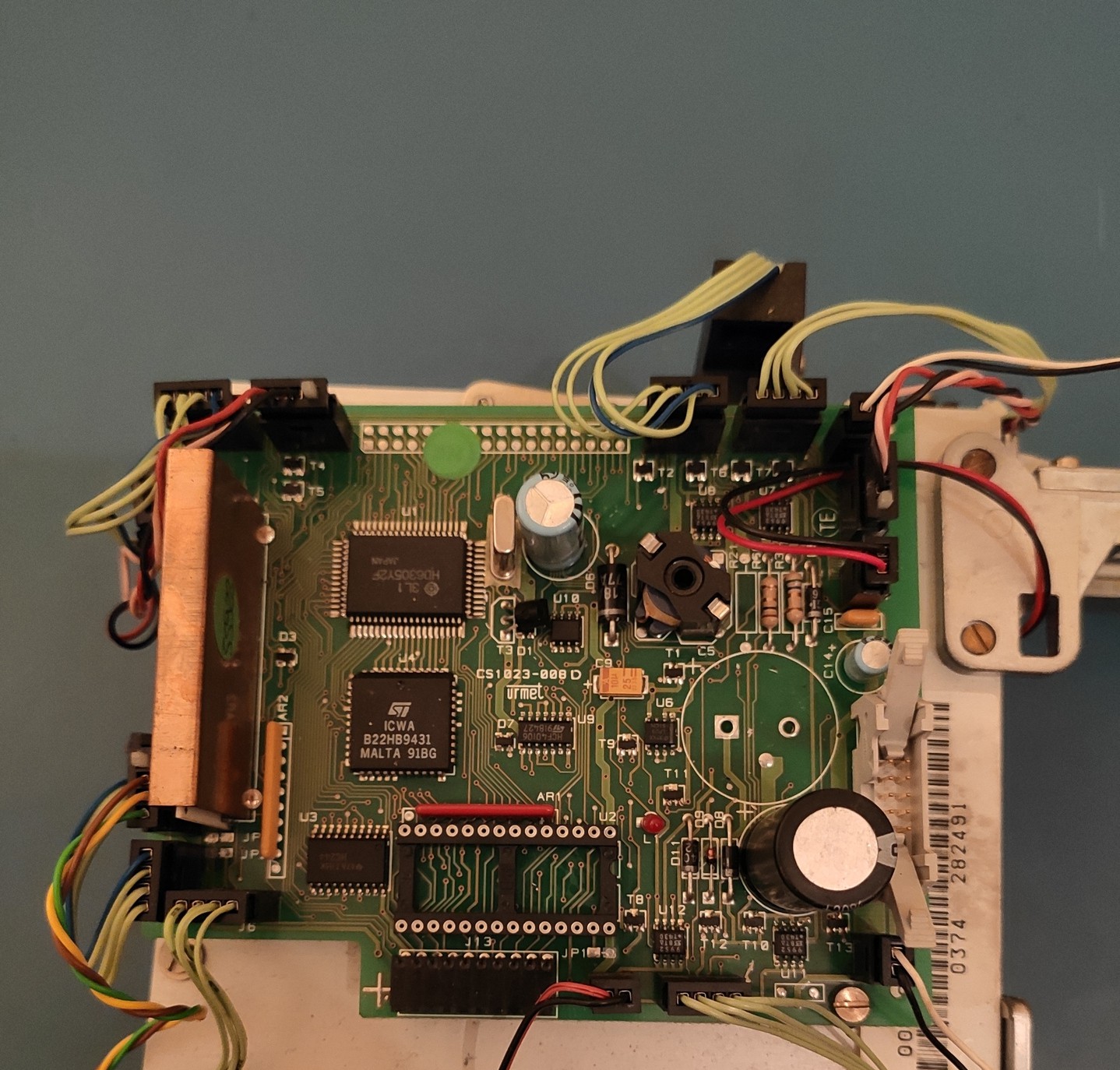As I hinted in the previous log, I managed to score a card reader on an auction site!
Here it is:

This is what would normally fit in the smaller red box on the side of the phone (in the project photo it's on the right). Interestingly, the same reader module (along with the two-wire O.V. board, with a different firmware) is used in the Rotor 3.
The device itself is pretty unusual as far as card readers go. The most obvious difference is the presence of two card slots; the one on the bottom is used only as an exit for the cards and there's a mechanism to prevent you from inserting anything in there.
The differences don't stop here, as you can see from the top view:

Circled in red is the first read head (note that cards are inserted "upside down", with the magnetic strip facing up); a photointerrupter (in green) is used to detect the presence of a card. A stop (under the section highlighted in yellow), controlled by a solenoid, is used to block the access to the rest of the mechanism unless a valid prepaid phone card is inserted. Note that ISO-sized credit cards are ALSO not allowed to go further into the mechanism, since they only need to be read by the first magnetic head once at the beginning of a call and do not need to stay in the reader (in fact, I suspect the entirety of the band is read only when pulling out the card, since the instruction specify to "insert it, then remove it quickly")
If a prepaid card is inserted, the stop moves out of the way and the card is pulled around a rubber coated drum, which can be seen in the next picture (see now why they need to be flexible?):

Around the drum, a series of photointerrupters (again in green) track the position of the card; there are also two more heads used to read and write data on the card; The drum itself is driven via a small motor (the cylindrical part visible at the bottom left of the first picture) and a long belt (which, unusually, is white-colored)
This might seem like a whole lot of unnecessary parts, but you have to keep in mind that the original magnetic phone cards had the credit info written directly on them, with all transaction handled locally, so they needed to a) keep the card in the phone until the end of the call and b) change the card contents before giving it back to the user. They changed pretty soon to a remote verification of the cards, reading the card ID from the magnetic strip and then getting the credit info from a remote database, but the readers stayed the same AND still updated the credit info (probably for backwards compatibility with the readers still using the old firmware).
The first readers built had an interesting "bug": putting a piece of tape on the magnetic strip, increasing the distance from the strip to the write head, was enough to make the write fail, effectively making the card usable for an infinite number of calls. This was fixed pretty soon, and the remote verification made it useless anyway.
The last interesting detail is the presence at the bottom of a mechanism to snip one of the edges of a card (see the picture in the first post: the card is not rectangular) after the first use. This was done to prevent dishonest sellers from giving you a card that had already been used.
After playing with the mechanisms for a bit, I turned my attention to the board:

As you can see, it's got the same HD6305Y2 MCU, a 27C256 EPROM (already removed in the picture) for the code, and a ST chip I could not identify (which is hooked to the CPU bus); under the copper shield, a ceramic module houses the analog circuitry for the three magnetic heads.
I already dumped the ROM, but without knowing what the mistery "ICWA B22HB9431" chip does I can't fully reverse engineer the code, since it's mapped in memory and thus directly accessed; I still have a lot of code to go through both in this ROM and in the main phone ones, so there will be an update in the future about the code.
Discussions
Become a Hackaday.io Member
Create an account to leave a comment. Already have an account? Log In.